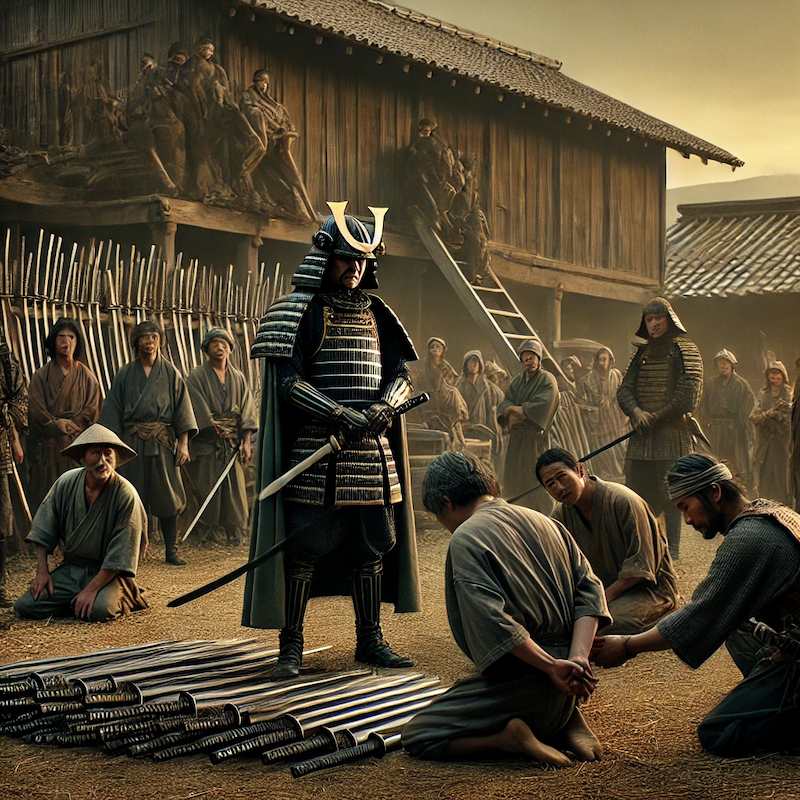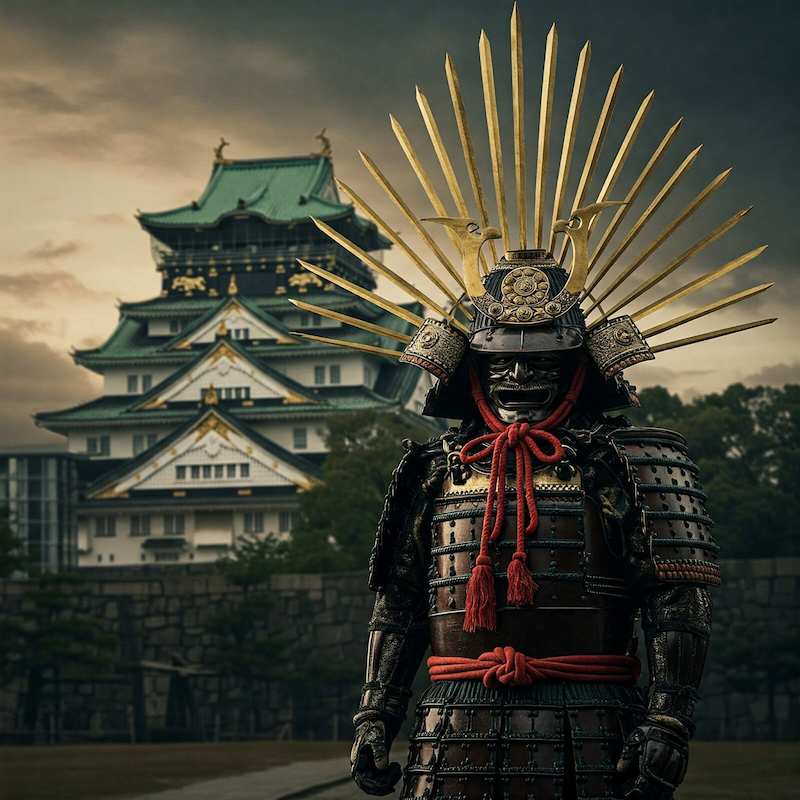Toyotomi Hideyoshi (1537-1598) was one of Japan’s most remarkable military commanders, achieving an unprecedented rise from a lowly farmer to the unifier of Japan. Serving under Oda Nobunaga, Hideyoshi steadily climbed the ranks through his strategic brilliance and exceptional interpersonal skills. Following Nobunaga’s assassination, Hideyoshi seized control and completed the unification of Japan. His legacy is defined by his political acumen, military tactics, and governance reforms.
- Early Life and Service Under Nobunaga
- Nobunaga’s Death and the Unification of Japan
- The Taikō Land Survey and the Sword Hunt – Strengthening Domestic Rule
- The Invasions of Korea and Hideyoshi’s Final Years
- Hideyoshi’s Legacy
- Toyotomi Hideyoshi and Shōgun
- From History to Screen: Meet Taiko
- Return to Tokyotomi Hideyoshi Page
Early Life and Service Under Nobunaga

Hideyoshi was born in 1537 in Owari Province (modern-day Aichi Prefecture) to a peasant family. Despite his humble beginnings, his resourcefulness and charisma allowed him to gain entry into the service of Oda Nobunaga. As a foot soldier, he displayed extraordinary talent and, within a few years, became known as Kinoshita Tōkichirō, a trusted retainer of Nobunaga.
Hideyoshi played crucial roles in various military campaigns, such as the Battle of Anegawa (1570) against the Asai-Asakura alliance and the Battle of Nagashino (1575), where he managed supply lines and logistics. His exceptional ability to conduct siege warfare was demonstrated in 1577 when he successfully captured Miki Castle in Harima Province.
Nobunaga’s Death and the Unification of Japan

In 1582, Oda Nobunaga was assassinated by Akechi Mitsuhide in the Incident at Honnō-ji. Seizing the moment, Hideyoshi swiftly avenged his master by defeating Mitsuhide at the Battle of Yamazaki. This victory positioned him as a leading contender to inherit Nobunaga’s legacy.
The following year, Hideyoshi eliminated another rival, Shibata Katsuie, at the Battle of Shizugatake, solidifying his power. In 1584, he faced Tokugawa Ieyasu in the Battle of Komaki and Nagakute. Rather than pursuing an all-out war, Hideyoshi employed diplomatic maneuvering to secure peace with Ieyasu. In 1585, he was appointed Kampaku (Imperial Regent), strengthening his political legitimacy.
With growing authority, Hideyoshi subdued major regional powers, including the Shimazu clan in Kyushu, the Mōri clan in western Japan, and the Date clan in the northeast. In 1590, he launched the Siege of Odawara, crushing the Hōjō clan and achieving the long-sought unification of Japan.
The Taikō Land Survey and the Sword Hunt – Strengthening Domestic Rule

After unifying Japan, Hideyoshi implemented key policies to consolidate his control. The Taikō Kenchi (Great Land Survey) standardized land assessments and taxation, ensuring economic stability. This survey also reinforced the separation between warriors and farmers, reducing the chances of peasant uprisings.
Another critical policy was the Sword Hunt Edict, which prohibited commoners from carrying weapons. By confiscating swords from peasants, Hideyoshi aimed to prevent rebellions and maintain order. These reforms laid the foundation for Japan’s peaceful transition into the Edo period.
The Invasions of Korea and Hideyoshi’s Final Years

In 1592, Hideyoshi launched an ambitious campaign to conquer the Ming Dynasty through Korea, known as the Imjin War (1592-1598). However, fierce Korean resistance, intervention by Ming China, and logistical difficulties led to the failure of the campaign.
Meanwhile, Hideyoshi’s health deteriorated, and in 1598, he passed away, leaving his young son, Hideyori, as his heir. Without his strong leadership, the Toyotomi regime weakened, culminating in the decisive Battle of Sekigahara (1600), where Tokugawa Ieyasu emerged victorious. In 1615, the Tokugawa forces crushed the Toyotomi remnants at the Siege of Osaka, marking the end of Hideyoshi’s lineage.
Hideyoshi’s Legacy
Toyotomi Hideyoshi is remembered as the ultimate “rags-to-riches” figure in Japanese history. His military genius, political reforms, and innovative governance helped shape Japan’s transition from a warring state to a unified nation. His rule set the stage for the stability of the Tokugawa shogunate. Without his efforts, Japan’s Sengoku period may have lasted much longer.
Despite his eventual downfall, Hideyoshi’s remarkable journey from a peasant to the ruler of Japan remains one of the most dramatic and inspiring stories in history.
Toyotomi Hideyoshi and Shōgun
The recent TV drama Shōgun features a character modeled after Toyotomi Hideyoshi, referred to as the Taikō. In the series, the power vacuum following his death sets the stage for the struggles among the Five Elders (Go-Tairō).
However, Hideyoshi’s real life was even more dramatic than fiction. Rising from humble origins, he used his intelligence, leadership, and audacity to shape the course of Japanese history. His decisive actions ended the Sengoku period and ushered in a new era of governance. Modern business leaders and strategists continue to draw lessons from his ability to manage people, wield power, and adapt to changing circumstances.


